Superlatives trip off the tongue when discussing Paris’ Musée du Louvre. With some 18 acres of gallery space and more than eight miles of corridors it is the world’s largest museum, not to mention the most visited, with annual attendance now approaching nine million. And it is unquestionably the most important cultural heritage site in France, which was the dominant cultural power in the west for a good part of the last millennium.
Last month, when thieves broke into the splendorous Galerie d’Apollon in broad daylight and made off with nearly 90 million euros worth of France’s Crown Jewels, the Louvre beat out the competition once again, receiving what can only be described as the worst publicity of any major museum in recent memory. The robbery left in its wake a museological mess for the Louvre and a full-blown crise institutionnelle for France.
This recent, embarrassing spectacle caps off what can seem like decades of dissatisfaction. The museum started to take on its current, unmanageable contours in the 1980s, and, long before the humiliation of the robbery, it had been a steady source of doubt, complaints, and overall malaise.
With its exhausting scope, maddening lines, and shopping-mall set-up, the Louvre may be hard to like. However, recent weeks of bad press have also provided a good opportunity to recall how and why it can still claim to be the world’s greatest museum, and why it therefore remains easy to love.
With that in mind, here are ten of the Louvre’s essential works.
1. Leonardo’s Mona Lisa (1503-1519)
Leonardo’s Mona Lisa (1503-1519)
agcreativelab
Leonardo spent his final years in France, but it was not until after his death in 1519 that this mysterious portrait, possibly of an Italian noblewoman, was acquired by his patron, the French king Francis I. Now France’s—and arguably the world’s—most famous painting, it was for centuries merely one of many masterpieces in the country’s royal collections. Stashed in the Palace of Versailles by Louis XIV, and then landing in the Louvre after the French revolution, it was catapulted into the stratosphere on the eve of the First World War, following a headline-grabbing theft by a disgruntled museum handyman. But permanent iconic status belies its symbolic importance: the painting’s Italian origins and French pedigree make it a potent reminder of the great transfer of artistic prestige that saw France dislodge the Italian peninsula as Europe’s creative superpower.
2. Eugène Delacroix’s Liberty Leading the People (1830)
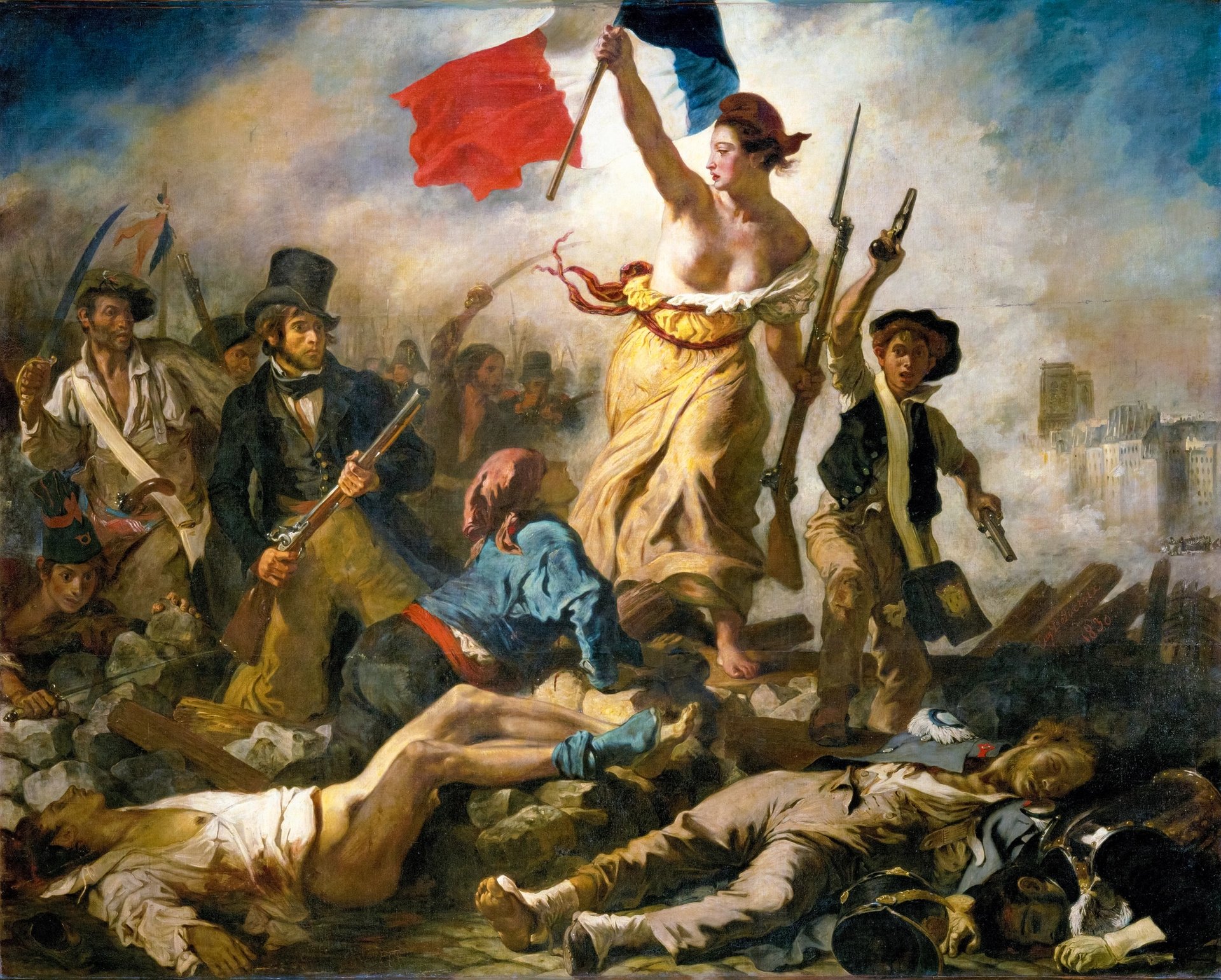
Eugène Delacroix’s Liberty Leading the People (1830)
GiorgioMorara
In July 1830, French king Charles X got the sack when Parisian mobs turned a series of spontaneous skirmishes into an outright revolution. In a massive allegorical painting, Delacroix commemorated the event in this scene on the barricades, with a resolute and otherworldly Liberty leading Parisians into battle. Suggesting the Roman goddess Libertas, while wearing a cap made popular during the original French Revolution, Liberty heads up a varied crowd of eternal Parisians types, including a top-hatted bourgeois, a street urchin, and a hopeful, downtrodden worker.
A 2024 conservation treatment, removing decades of dirt and yellowing varnish, has revealed the halo-like sky just behind Liberty, and the scale of violence at her feet. But varnish or no varnish, the image itself has broken out of its original context and settled in as France’s de facto national artwork.
3. Michelangelo’s Dying Slave (1513-1515)

Michelangelo’s Dying Slave (1513-1515)
imagoDens
Originally commissioned in 1505 for the tomb of Pope Julius II and completed just after his death in 1513, this seven-foot masterpiece reached France by the middle of the 16th century. After bouncing around a number of noblemen’s chateaux, it finally reached the Louvre in 1794. Recalling the dynamic suffering of Hellenistic sculpture, it can also seem to anticipate the later Baroque innovation of pairing ecstasy with death. And it has few rivals in its depiction of male beauty—save, perhaps, the artist’s own David, created a decade earlier.
4. Venus de Milo (2nd Century BC)
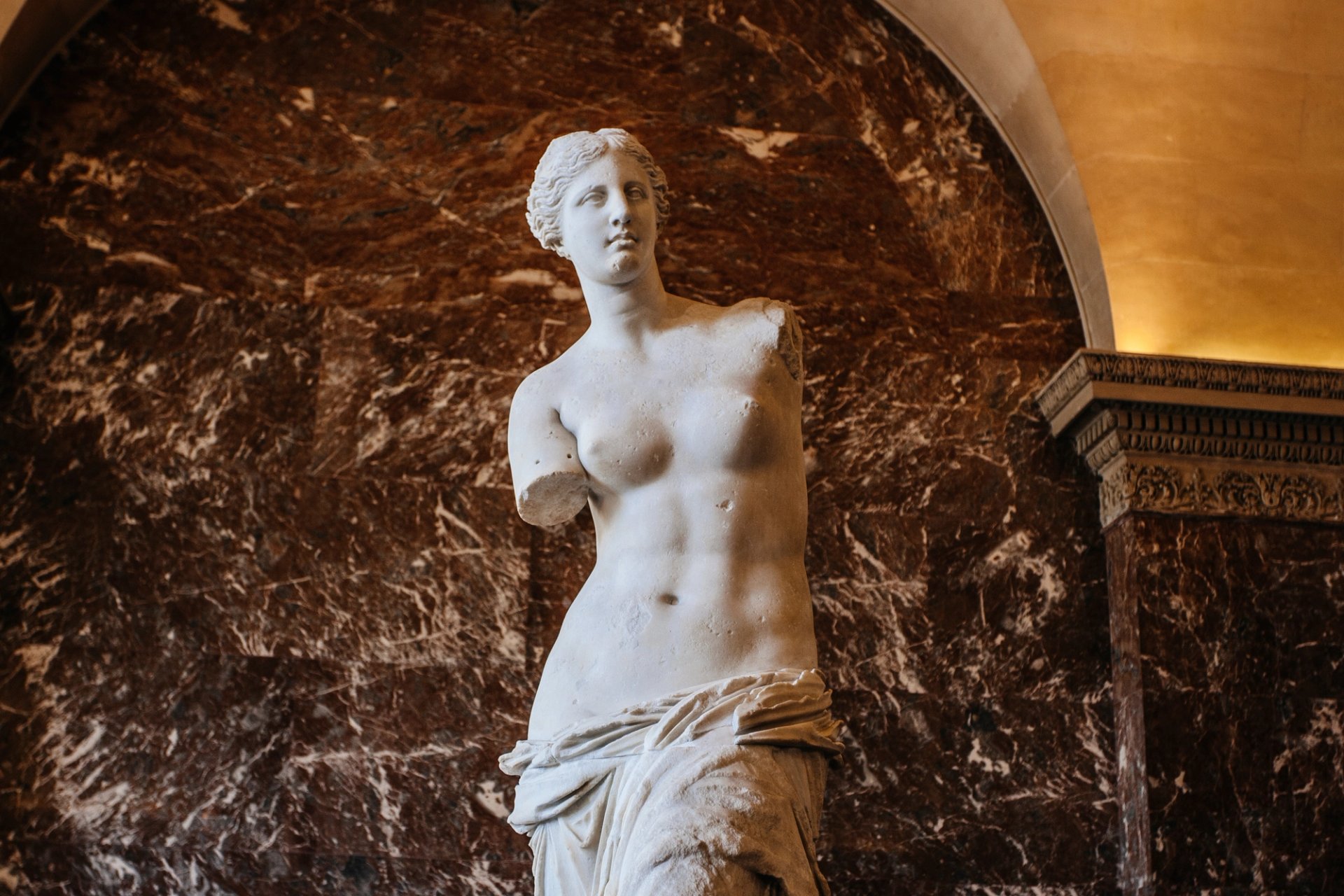
Venus de Milo (2nd Century BC)
Alexandra Lande
Discovered by a farmer on the Greek island of Melos in 1820, this beauty, rendered armless at some point in the last few millennia, is believed to be the goddess Aphrodite. The statue was presented to King Louis XVIII, who then donated it to the Louvre. At the time, restorers considered adding back the arms, and their decision not to do so can now be considered an ingenious branding exercise. Without its arms, the statue’s face and torso are emphasised in such a compelling and distinctive way that it quickly became one of the Louvre’s leading attractions—and, in retrospect, a proto-Modernist icon.
In the 1930s, the Venus de Milo officially got its Surrealist updating, when Salvador Dali ornamented his version with a series of bizarre drawers.
5. Raphael’s Portrait of Balthazar Castiglione (1514-15)

Raphael’s Portrait of Balthazar Castiglione (1514-15)
Sophie Animes
This depiction of Raphael’s friend, the Italian humanist and author Balthazar Castiglione, is near the top of the list of most admired Renaissance portraits. One of a few canvas works by the artist, it exudes refinement. The pyramidal composition emphasizes Castiglione’s compassionate and inquisitive gaze, while the sumptuousness of his nearly monochromatic costume subtly offsets the blueness of his eyes. Acquired by Louis XIV in 1665 a few decades after arriving in France, it is now on view in the high-ceilinged Grande Galerie, the Louvre’s long corridor of Italian masterpieces.
6. Nicolas Poussin’s The Four Seasons (Spring) (1660-1664)
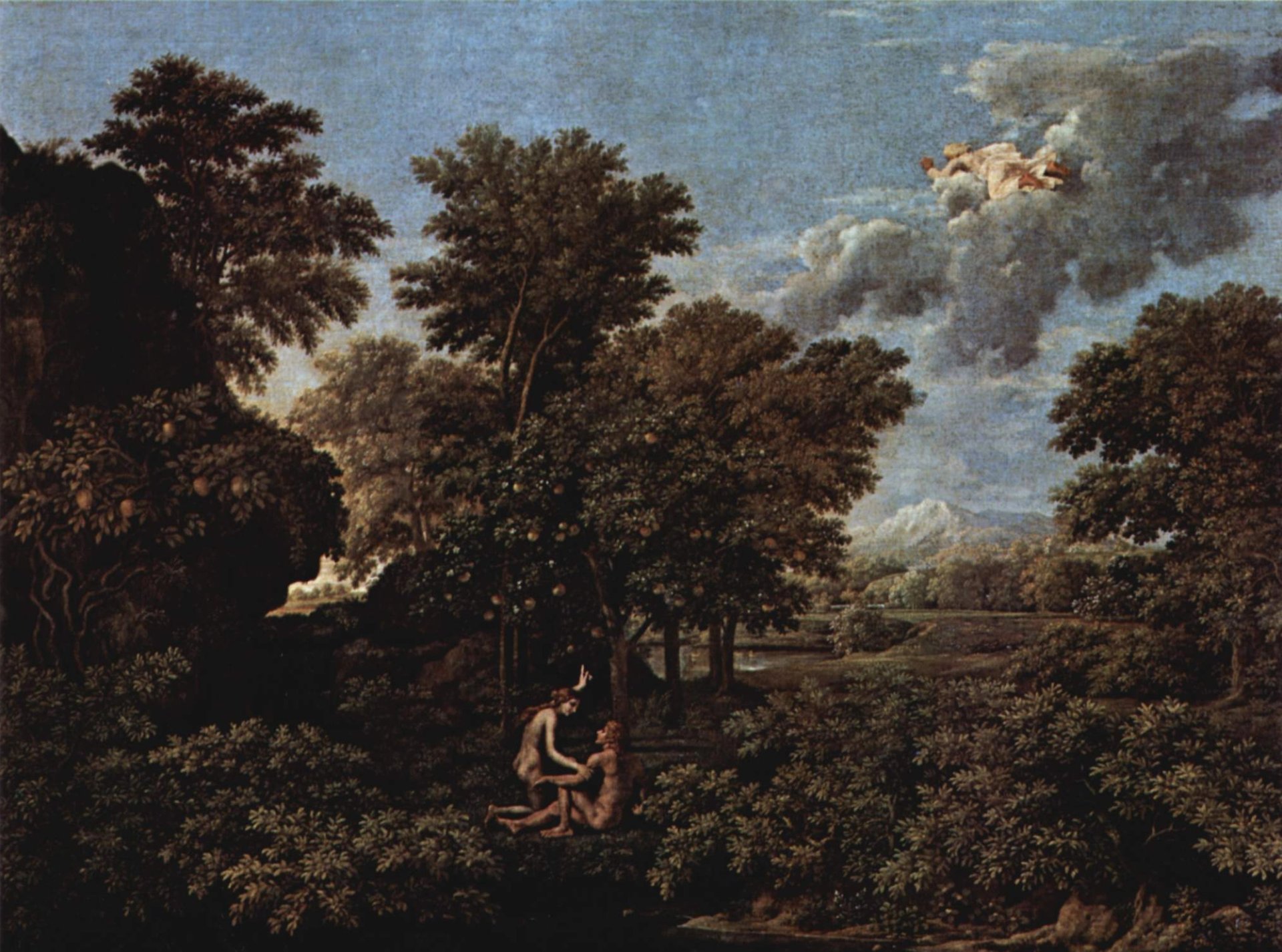
Nicolas Poussin’s The Four Seasons (Spring) (1660-1664)
The Yorck Project (2002)
Though he spent much of his working life in Rome, the Normandy-born artist Nicolas Poussin (1594-1665) was the French classicist ne plus ultra. During the ancien régime—the period prior to the French revolution—he was the only French painter to compete with Italian and Netherlandish artists for prestige in his homeland. Now, many of his greatest works are concentrated in the Louvre.
While Winter, which recalls Noah’s flood in Genesis, was long viewed as the most important of these four cycles, Spring perhaps best formulates Poussin’s signature fusion of the classical and the Christian. Together, the cycle of four paintings is regarded as the artist’s supreme achievement.
7. Peter Paul Rubens’ The Coronation of Marie de’ Medici at the Abbey of Saint-Denis, May 13, 1610 (first quarter of the 17th century)
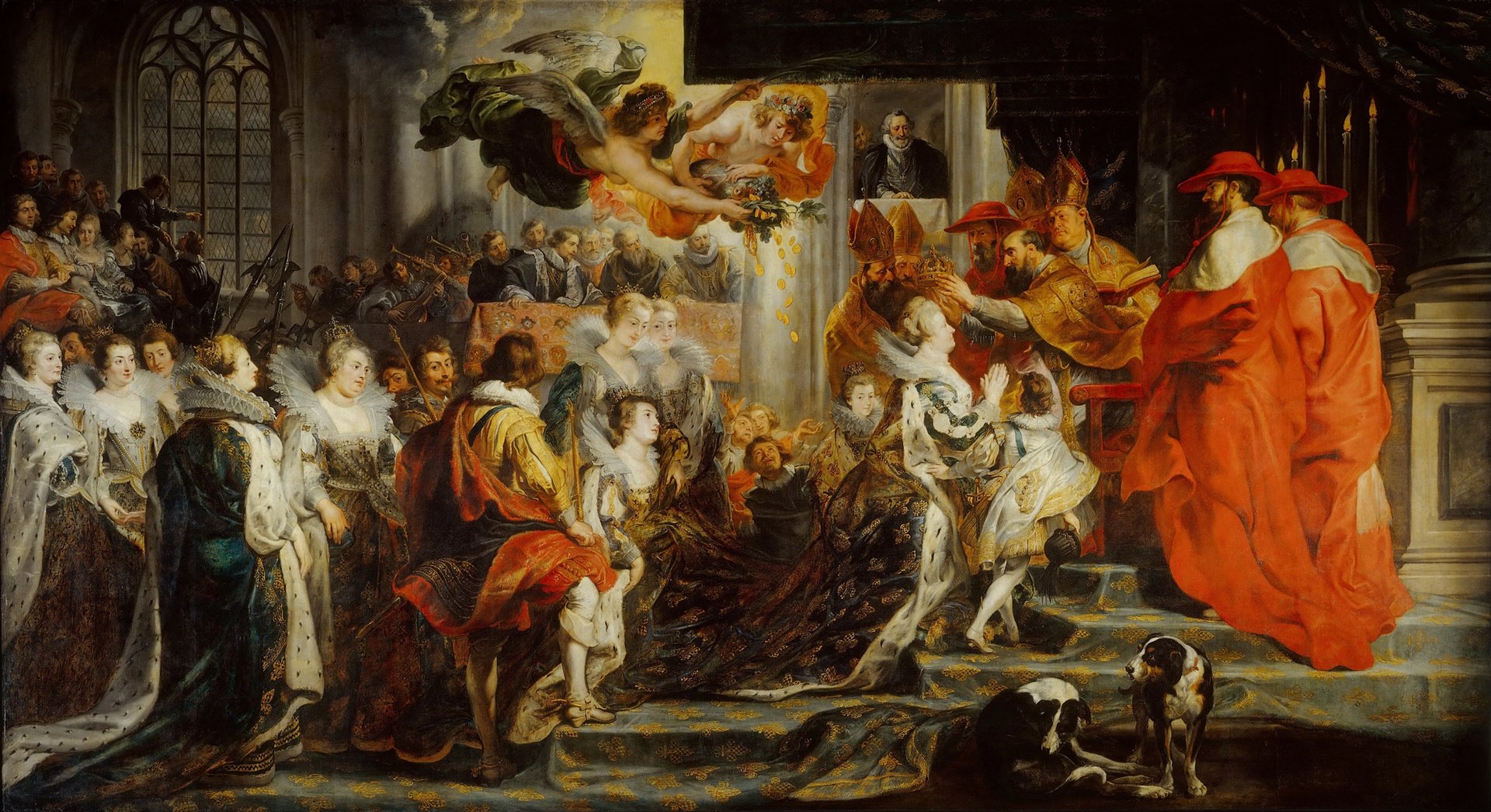
Peter Paul Rubens’ The Coronation of Marie de’ Medici at the Abbey of Saint-Denis, May 13, 1610 (first quarter of the 17th century)
Wikimedia Commons
Self-glorification came as second nature to French royalty, yet it took an Italian interloper to show the French exactly how to do it. Born in Florence’s Palazzo Pitti, Marie de’ Medici came to France to marry the French king Henry IV in 1600. After his assination in 1610, she served as regent for her young son, Louis XIII, who later grew to despise and eventually imprison her. She ended up dying in exile in 1642, age 67. However, in the early 1620s, during a brief respite from her son’s wrath, she commissioned Peter Paul Rubens, then Europe’s leading painter, to celebrate her life up to that time with 21 enormous history paintings and three portraits. Collectively turning Marie’s tumultuous, even shameful story into an extended pageant of Baroque splendor, the intact cycle is one of the glories of the museum.
Rubens’ depiction of her coronation is a stand-out, with Marie’s own alabaster figure, attended by the winged figures of Prosperity and Wealth, outshining her crown. It calls to mind another Louvre work of extravagant self-promotion: Jacques-Louis David’s The Coronation of Napoleon (1805-07), in which the diminutive French emperor, who commissioned the 10-meter wide painting, is shown crowning himself in Notre Dame. Like Marie, his incandescent profile manages to outshine his own crown.
8. The Monzon Lion (975/1100 AD)

The Monzon Lion (975/1100 AD)
Wikimedia Commons
The glass-covered Cour Visconti, opened in 2012, is home to the Louvre’s Islamic art collection, the most recently configured of the museum’s major departments. This elaborate bronze lion from Spain’s medieval Al Andalus has elaborate engraving in Kufic script, one of the oldest forms of Arabic calligraphy. Scholars don’t quite agree on its original function, but the wide mouth might seem to indicate that it was used as a water spout. Some believe its tail could be moved to mark the passage of time. Both rare and ornate, the Louvre promoted it as the Cour Visconti’s signature object when it launched the new space.
9. Hyacinthe Rigaud’s Portrait of Louis XIV (1701)
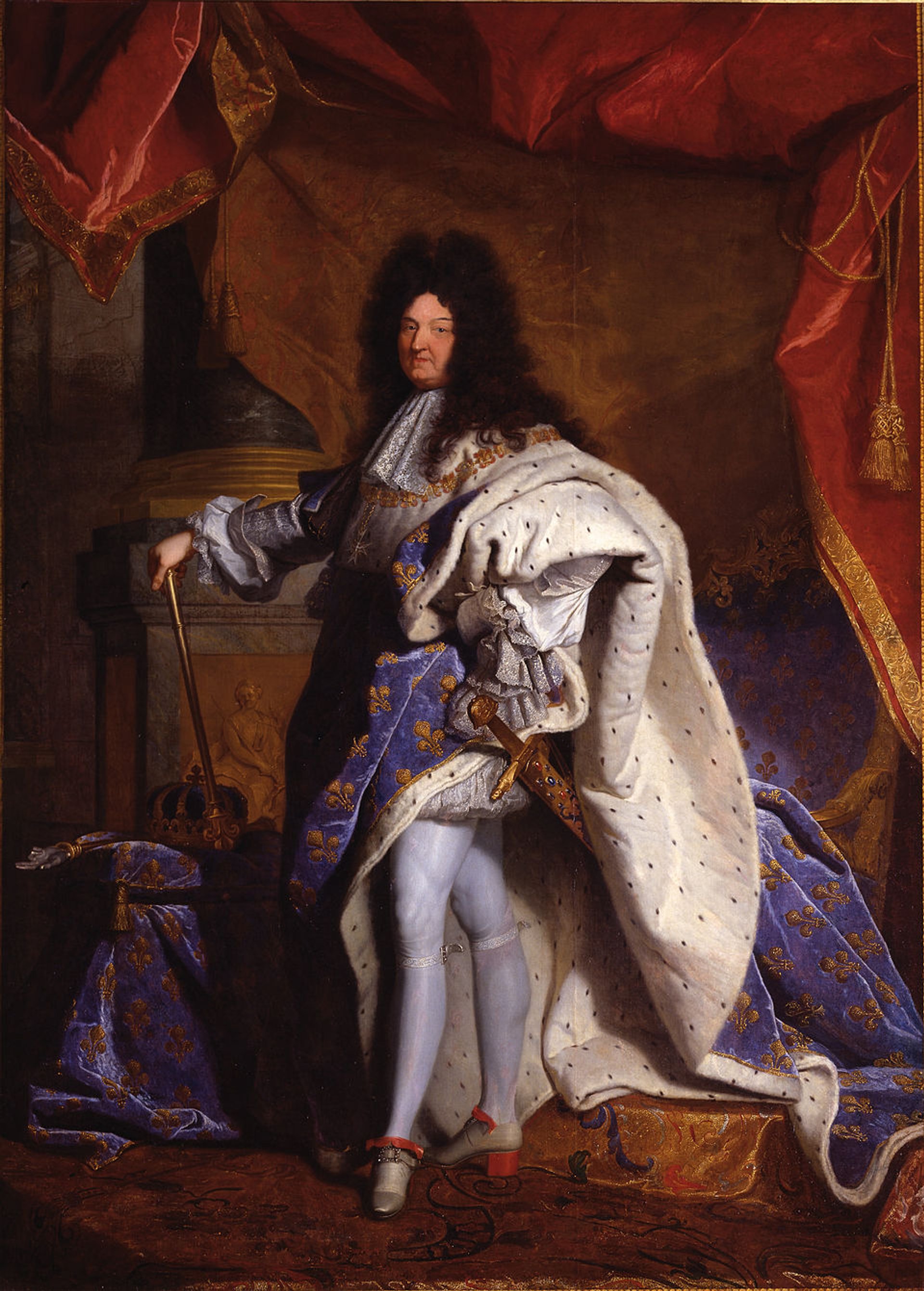
Hyacinthe Rigaud’s Portrait of Louis XIV (1701)
Wikimedia Commons
Franco-Catalan painter Jacint Rigau-Ros i Serra—far better known as Hyacinthe Rigaud—portrayed four generations of Bourbons. And though he went on to paint any number of European luminaries, from the Doge of Genoa to Augustus III of Poland, his supreme achievement was this much-copied depiction of Louis XIV, aged 63 and at the peak of his power. With his crown lurking in the shadows, at left, Louis is rendered both royal and celestial by any number of trappings, including a sumptuous fleur-de-lis cloak, upswept to show off his onetime dancer’s legs, and a wig that could be described as lion-like.
10. Élisabeth Louise Vigée Le Brun’s Self-Portrait with Julie (1789)
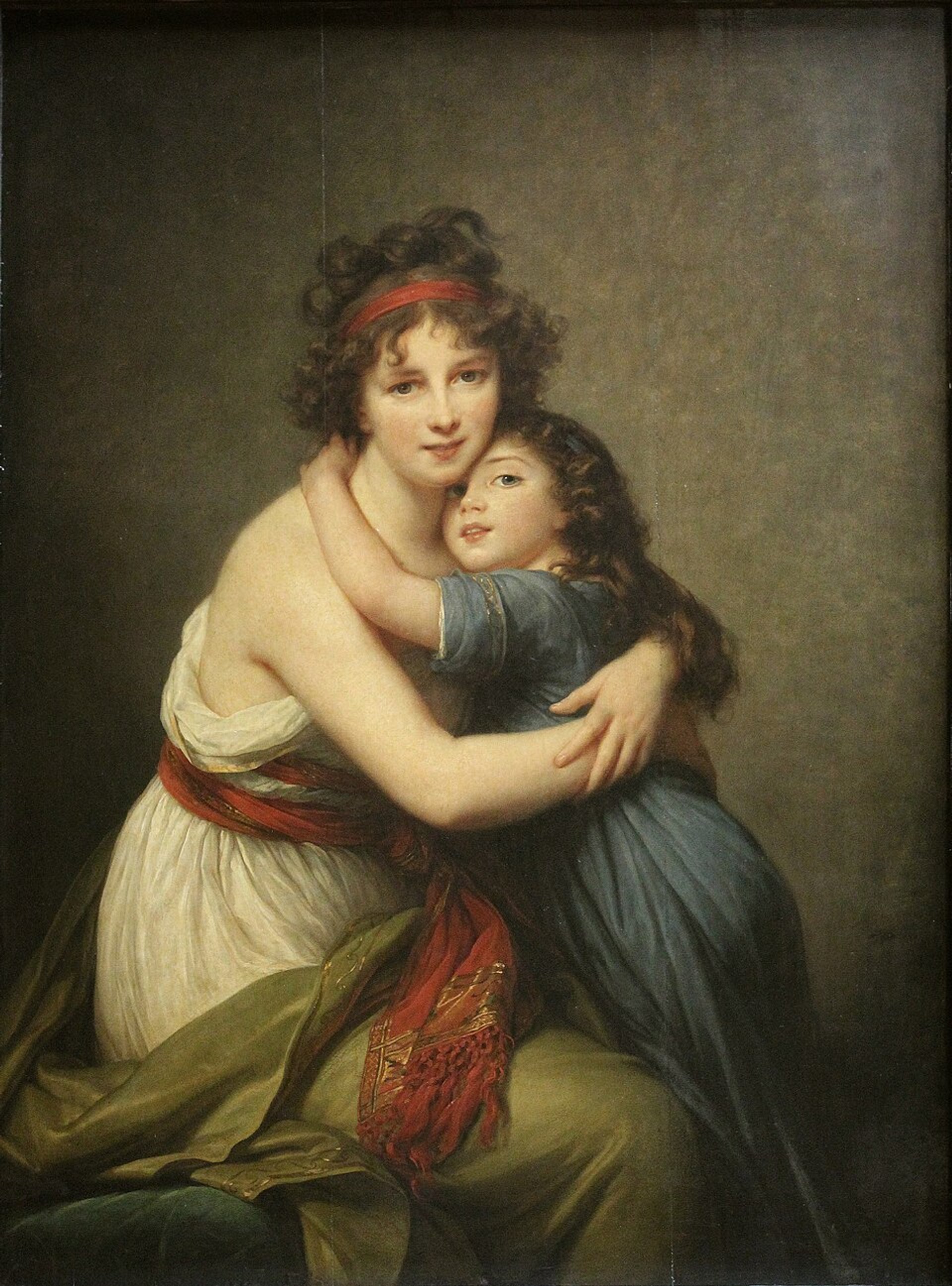
Élisabeth Louise Vigée Le Brun’s Self-Portrait with Julie (1789)
Wikimedia Commons
The leading woman artist of the ancien régime, Vigée Le Brun painted around 20 portraits of Marie Antoinette, including one that shocked the Salon in 1783, when she depicted the notoriously spendthrift queen in a simple muslin dress. Clothing once again proved an instigator in this later self-portrait, shown with her only surviving child. Dressed in a stylized Greek manner, in a costume she had worn to an infamous Neoclassical-themed party, Vigée Le Brun echoes a stately pyramid in the work’s composition, which is also a tenderhearted depiction of filial love.
The late art historian and novelist Anita Brookner, who greatly admired the work, positions it on the edge of two great art movements, describing it as “a Neoclassical picture resonant with Romantic feeling.”
